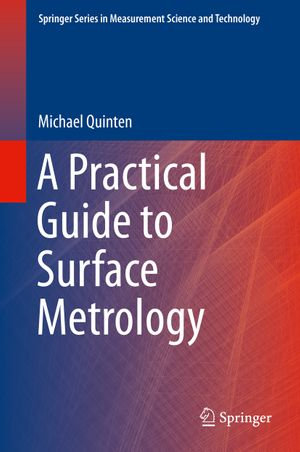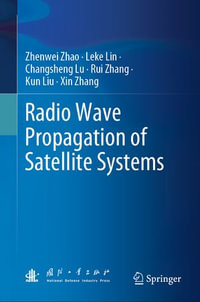
eTEXT
At a Glance
eText
$159.01
Instant online reading in your Booktopia eTextbook Library *
Read online on
Not downloadable to your eReader or an app
Why choose an eTextbook?
Instant Access *
Purchase and read your book immediately
Read Aloud
Listen and follow along as Bookshelf reads to you
Study Tools
Built-in study tools like highlights and more
* eTextbooks are not downloadable to your eReader or an app and can be accessed via web browsers only. You must be connected to the internet and have no technical issues with your device or browser that could prevent the eTextbook from operating.
This book offers a genuinely practical introduction to the most commonly encountered opticaland non**-**optical systems used for the metrology and characterization of surfaces, including guidance on best practice, calibration, advantages and disadvantages, and interpretation of results. It enables the user to select the best approach in a given context.
Most methods in surface metrology are based upon the interaction of light or electromagnetic radiation (UV, NIR, IR), and different optical effects are utilized to get a certain optical response from the surface; some of them record only the intensity reflected or scattered by the surface, others use interference of EM waves to obtain a characteristic response from the surface. The book covers techniques ranging from microscopy (including confocal, SNOM and digital holographic microscopy) through interferometry (including white light, multi-wavelength, grazing incidence and shearing) to spectral reflectometry andellipsometry. The non-optical methods comprise tactile methods (stylus tip, AFM) as well as capacitive and inductive methods (capacitive sensors, eddy current sensors).
The book provides:
- Overview of the working principles
- Description of advantages and disadvantages
- Currently achievable numbers for resolutions, repeatability, and reproducibility
- Examples of real-world applications
A final chapter discusses examples where the combination of different surface metrology techniques in a multi-sensor system can reasonably contribute to a better understanding of surface properties as well as a faster characterization of surfaces in industrial applications. The book is aimed at scientists and engineers who use such methods for the measurement and characterization of
surfaces across a wide range of fields and industries, including electronics, energy, automotive and medical engineering.
Read online on
ISBN: 9783030294540
ISBN-10: 3030294544
Series: Springer Series in Measurement Science and Technology
Published: 1st January 2020
Format: ePUB
Language: English
Publisher: Springer Nature
You Can Find This eBook In
This product is categorised by
- Non-FictionEngineering & TechnologyTechnology in GeneralInstruments & Instrumentation EngineeringEngineering Measurement & Calibration
- Non-FictionScienceScience in GeneralScientific StandardsMensuration & Systems of Measurement
- Non-FictionSciencePhysicsOptical Physics
- Non-FictionEngineering & TechnologyMechanical Engineering & MaterialsMaterials ScienceTesting of Materials
- Non-FictionSciencePhysicsMaterials & States of MatterCondensed Matter Physics including Liquid State & Solid State Physics
- Non-FictionEngineering & TechnologyOther Technologies & Applied SciencesApplied OpticsLaser Technology & Holography























